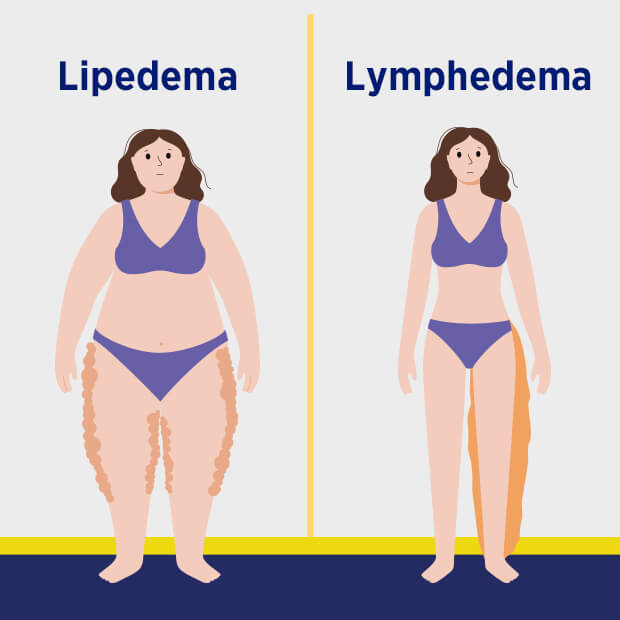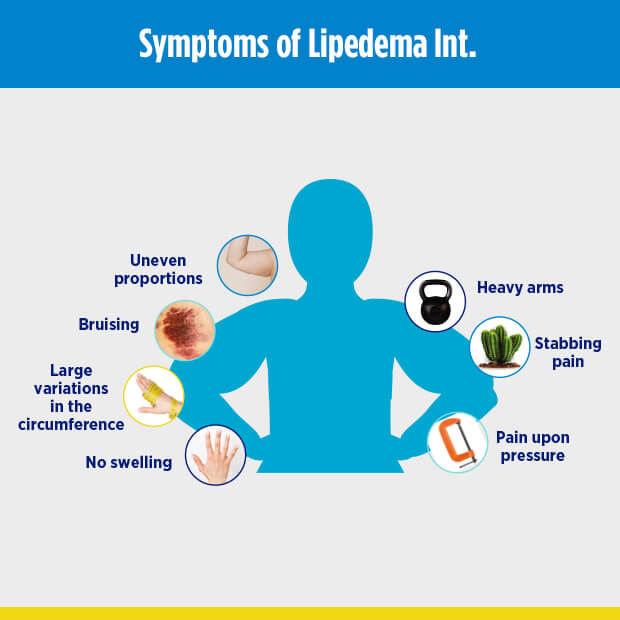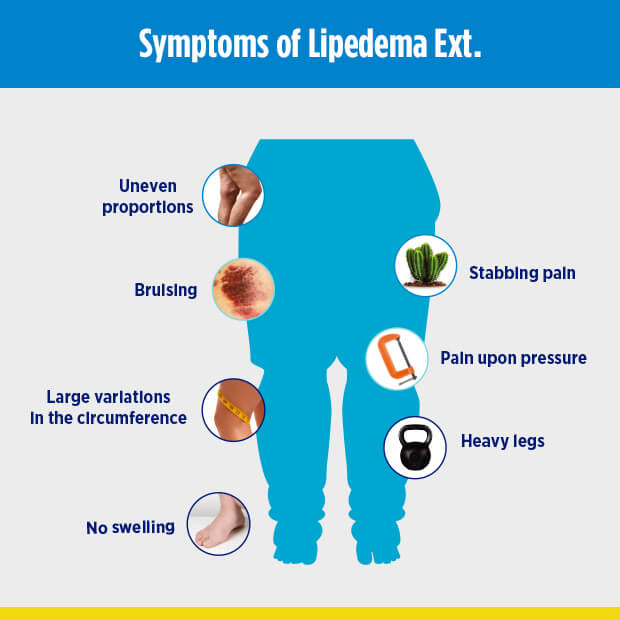Sometimes, we see people whose hips or legs are much larger than their torso, often out of proportion to the rest of their body. It is mostly assumed to be obesity-linked, but if there is a disproportionate difference between the upper and lower half of the body, it could be lipedema. This is a very common health issue that mainly affects the thighs, hips, calves, and ankles and should not be wrong for obesity or cellulite.
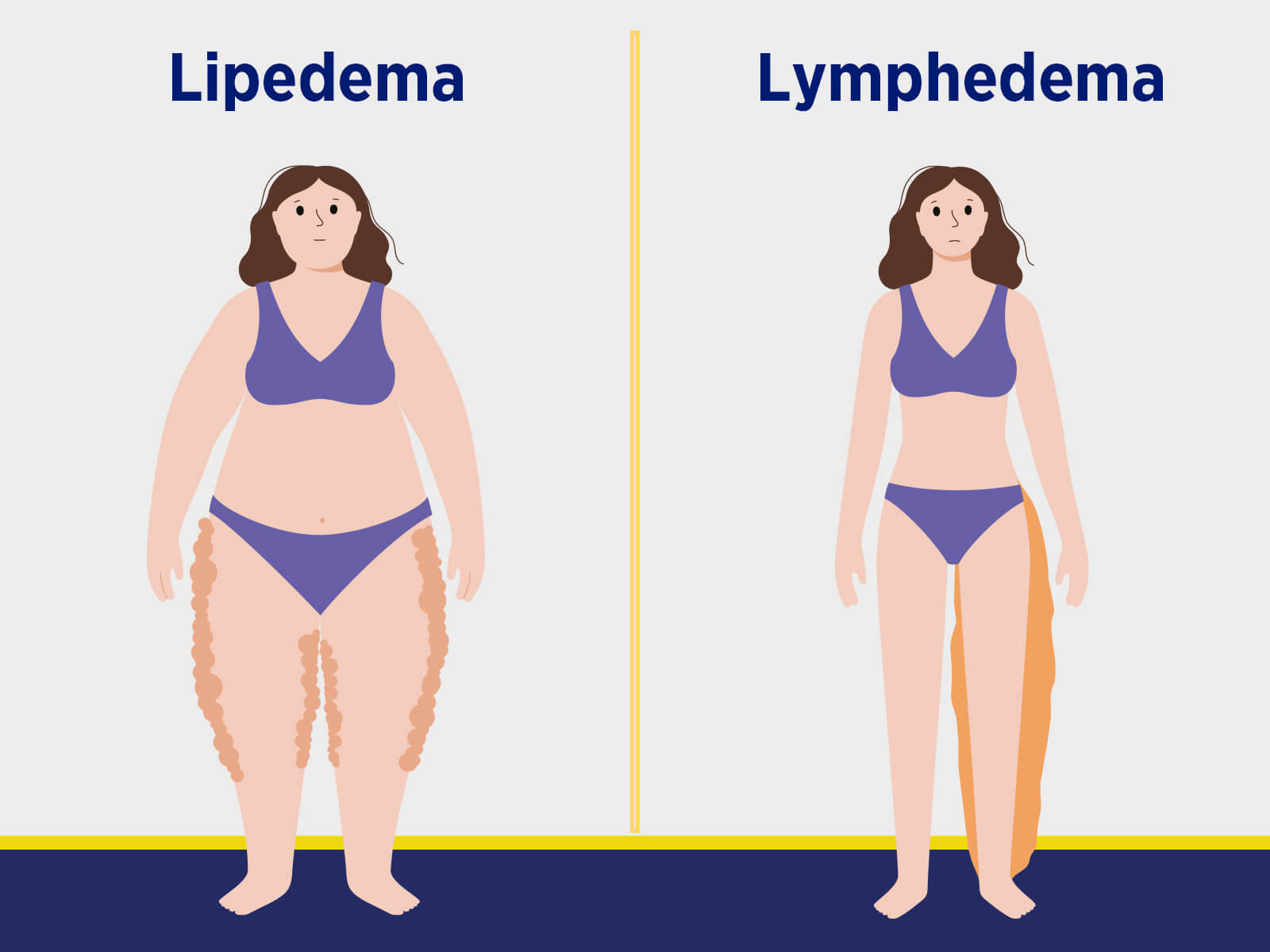
Lipedema is a chronic and progressive disease, meaning that the lower body keeps growing over time. This can change a person’s self-image and, in some cases, their quality of life. The health problem can cause leg pain and discomfort, making it hard to walk or do daily activities. The swelling and changes in how you look can also move self-esteem and mental health, leading to a lower quality of life.
Lipedema is an abnormal build-up of fat under the skin, most often in the lower body. The fat often builds up starting from the buttocks (glutes) and continuing downward. What may at first seem to be an issue of how you look can lead to pain and other problems over time. Women are more likely to have this health problem, whose symptoms are higher body volume, swelling and bloating, skin that feels firm to the touch, and a disproportionate lower half of the body.
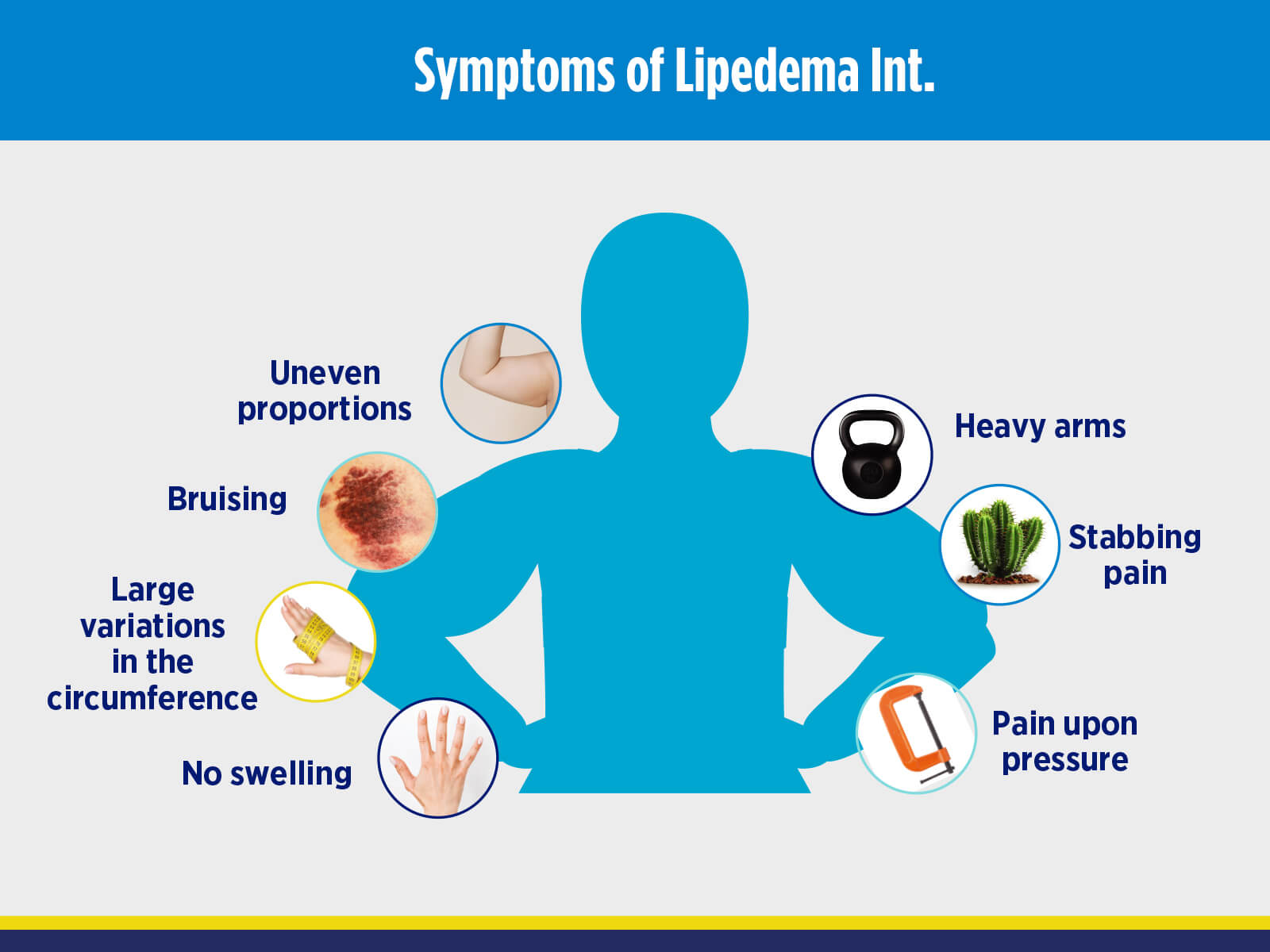
Symptoms worsen during menstruation, hot weather, and physical activity. The zone becomes more sensitive to the cold, touch, and pressure, such as from clothing. Even a gentle pinch can be very painful for someone who has lipedema.
This health problem is grouped into Stages as stated by the growth of the disease:
- The skin feels soft but has small palpable fat nodules.
- The skin feels firm and uneven due to gained fatty lumps.
- The skin is very swollen, mainly on the hips and ankles, with many lumps of varied sizes.
To diagnose lipedema, the doctor will check a patient’s legs. They may also do other tests like MRI, CT, ultrasound, DEXA bone density scans, or other nuclear imaging. If you have been diagnosed or think you may have lipedema, we suggest that you make an appointment so that your doctor can check you and suggest a treatment plan. One of the solutions may be liposuction, a type of cosmetic surgery that removes excess fat from the zones where it has accumulated.
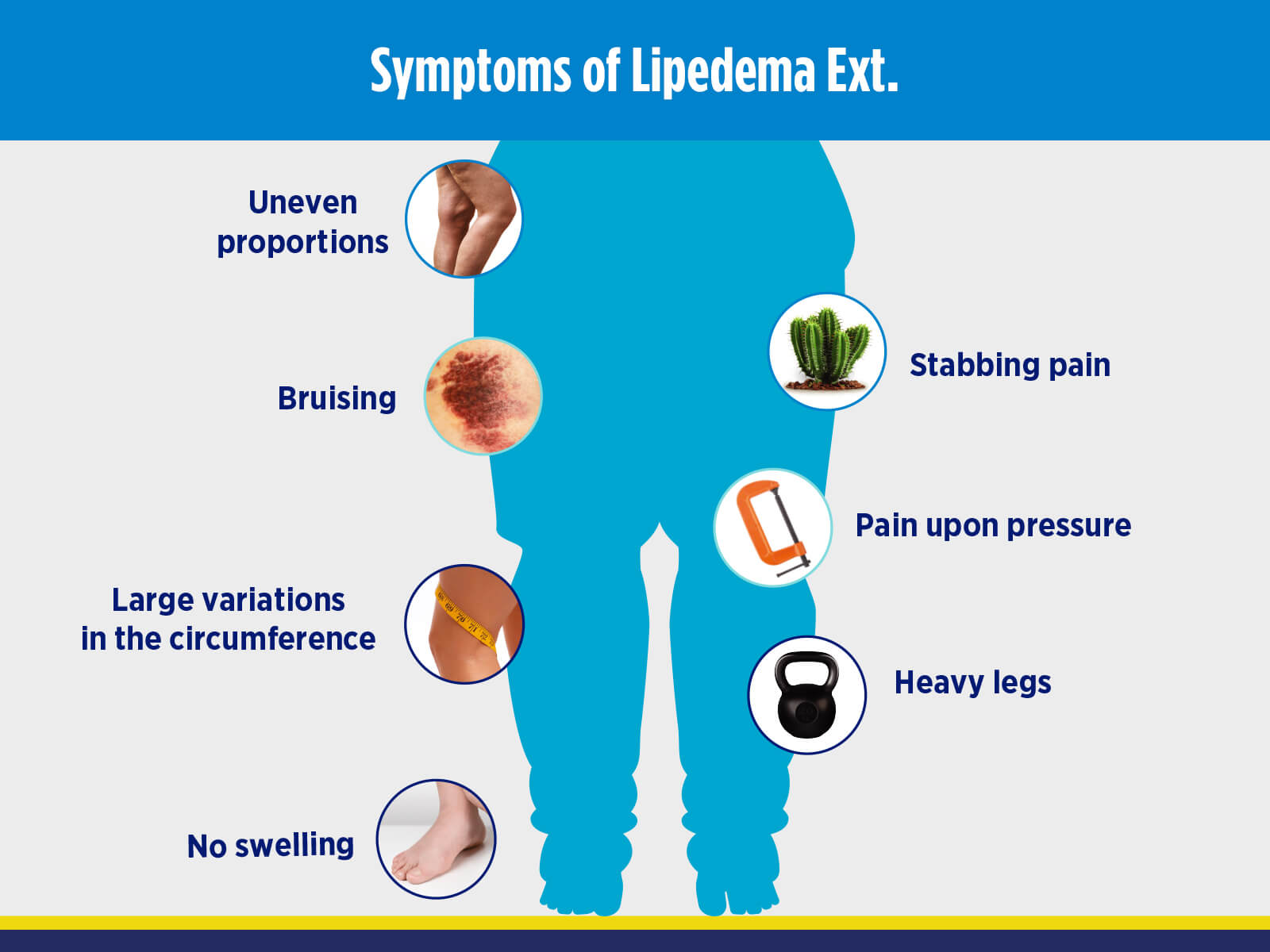
There is no known cure for lipedema, but there are treatments that can help improve the symptoms.
- Exercise and a healthy diet
- Compression stockings can help reduce pain and improve symptoms.
- Skin moisturizing lotions
- Antioxidant supplements. Selenium, for example, can reduce inflammation, and fat-burning supplements can help reduce the amount of fat.
- Liposuction can both remove fat and reduce pain.
- Bariatric surgery
Talk to your doctor if you have questions about this or any other health issue needing medical attention.
TSS-MKT-5563-2024-B

